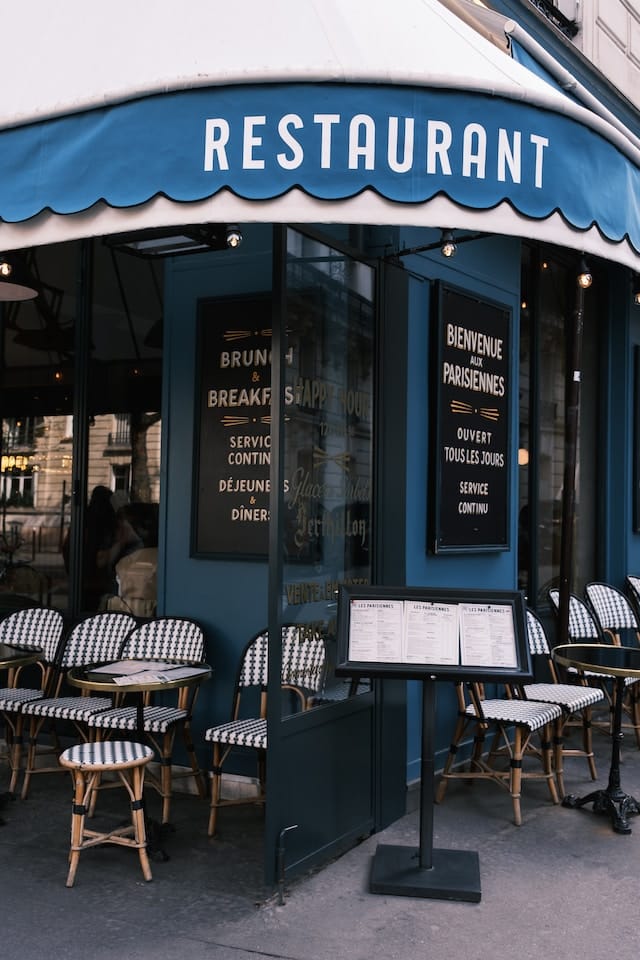What are the specific steps to ensure a smooth transition in kitchen leadership in a gourmet restaurant?

The dynamics of a restaurant's kitchen can be likened to a well-choreographed dance. Each member, from the chef to the kitchen staff, needs to move in harmony and synchrony to deliver culinary delights that keep customers coming. The transition of leadership in a gourmet restaurant is a considerable step, one that requires careful planning, management, and execution. This article will delve into five crucial strategies that can help facilitate a seamless transition in kitchen leadership, ensuring the continuation of excellent food quality and service.
Understanding the Challenges
Before you can begin planning for a transition, you need to understand the challenges associated with changes in leadership. When a new chef steps in to manage the kitchen operations, it often leads to changes in the staff's ways of working. The new chef might have a different culinary style, management approach, or expectations regarding safety, which can cause friction among the staff.
Also read : What strategies can be used to enhance the flavor profile of cocktails with minimal ingredients?
The key to navigating these challenges lies in preparation. It involves setting clear expectations, offering comprehensive training, and ensuring that the new chef is knowledgeable of the restaurant’s operations and culture.
Preparing the Team for the Transition
Preparing your restaurant's team for the transition is critical. This preparation involves open communication about the changes, setting clear expectations, and offering the necessary support.
Also to read : How can a bar organize a successful tasting event featuring rare whiskies?
Begin by informing your staff about the impending leadership change and the reasons behind it. Be open about the new chef's background and culinary style, and how this change might impact their work. Encourage your staff to express their concerns and fears, assuring them that their input during this transition phase is essential.
Next, outline the expectations from each team member during and after the transition. Provide a detailed job description emphasizing the skills required, the standard of service to uphold, and the quality of food to maintain.
Training and Onboarding the New Chef
Training and onboarding the new chef is another crucial step in the transition. This is the phase where the new chef becomes familiar with the restaurant's operations, safety procedures, and food quality standards.
Begin by providing a comprehensive tour of the restaurant, focusing on the kitchen and dining area. Familiarize the new chef with the equipment, safety procedures, and cleaning routines. Highlight the restaurant's core values, service philosophy, and culinary style.
Next, ensure the new chef understands the restaurant's menu and the quality standards for each dish. This could involve tasting sessions and cooking trials.
Maintaining Consistency in Food Quality and Service
Though a new chef brings in their culinary style and creativity, it is essential to maintain consistency in food quality and service. This can be achieved by ensuring that the new chef is well-versed with the restaurant's signature dishes and understands the expectations of the customers.
Conduct regular evaluations to assess the food's taste, presentation, and quality. Use customer feedback to gauge if there is a shift in the restaurant's culinary style or service quality. If issues arise, address them promptly with the new chef and the kitchen staff.
Empowering the Staff and Nurtifying a Positive Work Environment
The final step in ensuring a smooth transition in kitchen leadership centers around the staff. Empower the kitchen staff by involving them in the transition process. Encourage them to share their insights about the restaurant's operations, their suggestions for improvement, and the challenges they face.
Promote a positive work environment by acknowledging the staff's efforts and achievements. A supportive and creative work culture can ease the transition and ensure that the team continues to deliver outstanding culinary experiences.
In conclusion (though we're not really concluding), the transition of kitchen leadership in a gourmet restaurant demands careful planning, clear communication, and effective management. By understanding the challenges, preparing the team, training the new chef, maintaining food quality and service, and nurturing a positive work culture, you can ensure that the transition is as smooth as the exquisite sauces your restaurant is known for.
Integrating Sous Chef and Executive Chef: A Strategic Approach
The executive chef's role is a vital one in the restaurant, dictating the overall rhythm, and setting the standard for food preparation and presentation. On the other hand, the sous chef, often considered the right hand of the executive chef, plays a significant role in ensuring the implementation of the executive chef's vision. When a change in kitchen leadership occurs, it is crucial to effectively integrate the roles of the new executive chef and the current sous chef.
Start by organizing a meeting between the new executive chef and the sous chef. This meeting will allow them to understand each other's roles, responsibilities, and work ethic. It will also provide an opportunity for the executive chef to share their culinary vision and approach, fostering an atmosphere of mutual respect and cooperation.
Next, arrange a shadowing period. During this period, the new executive chef will work closely with the sous chef, observing the restaurant's daily operations, familiarizing themselves with the menu items, and understanding the dining room's fast-paced environment. This hands-on experience will equip the new chef with practical insights into the kitchen staff's workflow, food handling processes, and health safety regulations.
Remember, the sous chef also offers vital continuity during this transitional phase, having already developed a rapport with the kitchen staff and gained a detailed understanding of the culinary arts practiced in the restaurant. It's important to emphasize this role to the new executive chef.
Ensuring Customer Satisfaction: An Ongoing Commitment
While the transition in kitchen leadership is predominantly an internal matter, it can significantly impact the restaurant's external audience - the customers. Ensuring customer satisfaction should be a top priority during this transition. After all, a restaurant's success depends on its ability to deliver high-quality food and exemplary customer service consistently.
To start with, the new executive chef should be made aware of the restaurant's customer base, their preferences, and expectations. This understanding will guide their culinary decisions, helping them to create dishes that meet the customers' taste and quality expectations while still showcasing their unique culinary style.
Regularly assessing customer satisfaction is crucial. Encourage feedback from customers about the food, service, and overall dining experience. This feedback is invaluable in identifying areas that need attention and detail. Additionally, it's worth considering if the restaurant is maintaining its standards and meeting its patrons' expectations.
You could also introduce a ‘customer satisfaction survey’ during the transition period. The insights gathered from this survey can provide a quantitative measure of customer satisfaction, offering a clear picture of how well the transition is being received by the customers.
In conclusion, a smooth transition in kitchen leadership at a gourmet restaurant is a meticulous process that requires careful planning, clear communication, and an unwavering focus on quality and customer satisfaction. By understanding the challenges, integrating the executive chef and sous chef roles effectively, preparing the team for the transition, maintaining high food quality, and nurturing a positive work culture, the transition can be as seamless as possible. Remember, change can be a catalyst for creativity and innovation, offering an opportunity to elevate the restaurant's culinary prowess to new heights.
